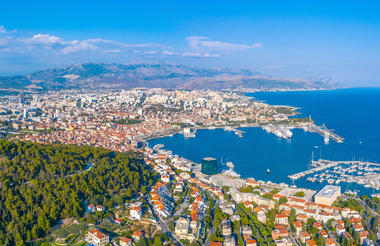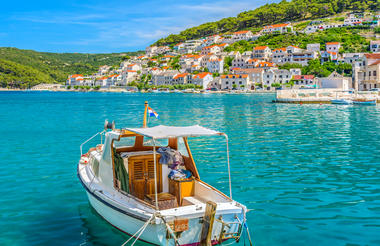Split, the second largest town on Croatia’s Dalmatian Coast, is famed for its exquisite beaches and the fortress-like complex at its centre - Diocletian's Palace, erected by the Roman emperor in the 4th century. Once home to thousands, this sprawling UNESCO World Heritage site is encircled by white stone walls and contains some lovely courtyards lined with an array of galleries, shops, bars, cafes, cathedrals, and several historical houses. Add to this an impressive backdrop of dramatic coastal mountains and the glistening waters of the Adriatic, and it is not difficult to see why the locals frequently claim that theirs is, "The most beautiful city in the world".



Situated in central Dalmatia on the shores the Adriatic Sea, Brac Island is blanketed by a forest of cypress trees and endowed with beautiful bays, steep cliffs and endless sandy beaches. Set against a backdrop of sun-drenched hills are several idyllic villages and towns, with the Port of Supetar serving as the main point of entry and the largest town on the island. The town is enfolded by a country landscape of olive groves, orchards, and pine woods that stretch along the coast until the bay of Vlacica. Its harbour is ideal for a stroll along a network of medieval streets lined with local cafes and small shops. The smaller village of Bol is the proud host of one of the most beautiful beaches in the country, Zlatni Rat.



Situated in the Adriatic Sea in the central Dalmatian archipelago, the island of Soltra lies west of the island of Brac, just south of Split. Soltra is fringed by crystal-clear turquoise waters lapping quiet pebble beaches. Visitors to the island can look forward to a wide selection of activities. Visit one of the many family-run farms, learn of the art of making olive oil, and enjoy a glass or two of delicious locally produced Dobricic wine. Other highlights include: sailing and boating around the island; swimming, snorkelling and fishing along the scenic coast; and soaking up views of the picturesque island.
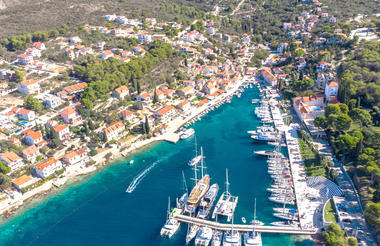
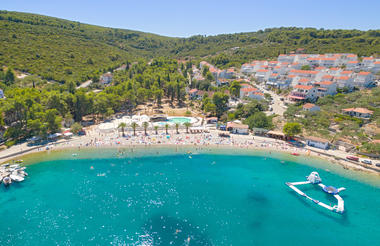
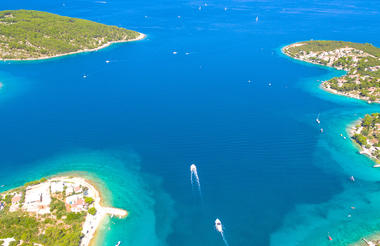
Situated in the Adriatic Sea just off the coast of Croatia, the sun-drenched island of Hvar is a popular summer destination known for its spectacular landscape characterised by lush rolling hills, hidden coves and secluded beaches. The island’s hillsides are covered with olive groves, lavender fields, and cultivated vineyards which produce excellent wines. The island's main town, also called Hvar, is a glitzy playground boasting vibrant nightlife, swanky hotels and elegant restaurants. For visitors looking for some serenity, the rest of the island is dotted with quaint fishing villages featuring magnificent medieval architecture, history and culture. Visitors can look forward to a variety of adventure activities including kayaking, snorkelling, scuba diving, caving, and boating.



As previously described



Dotting the Adriatic Sea off the Peljesac Peninsula of Croatia, the island of Korcula is best known for its dense pine forests, from which it got its name. One of Korcula’s unusual claims to fame is that it is said to be the birthplace of the Venetian merchant and adventurer, Marco Polo. Visitors can enjoy a wide selection of wonderful activities including: exploring the medieval architecture in the town of Korcula, discovering the beaches of Vela Przina and Pupnatska Luka, or jumping on a yacht excursion to explore the nearby island of Hvar. Other popular activities include: biking tours, sightseeing, hiking, sailing, windsurfing, sea kayaking, diving, snorkelling and paragliding.



As previously described



Mljet is a green island in the Adriatic archipelago of Croatia’s Dalmatia region. Considered one of the most alluring of the group, it is characterised by its lush Mediterranean forest and long shores lapped by clear waters rich in underwater life. The island is home to two beautiful salt lakes - Veliko Jezero and Malo Jezero. In the waters of Veliko Jezero, St. Mary’s Island hosts the renowned 12th-century Benedictine Monastery, one of the oldest church complexes in the Adriatic, and a significant representative of Croatia’s Romanesque culture. The lakes and the entire north-west part of the island are encompassed by a national park, providing excellent hikes up the hills. It is also possible to rent both bicycles and kayaks. The sheltered and sunny beaches at the Eastern tip of the island offer year-round warm waters, beachside restaurants and idyllic accommodation options.



Located in the Adriatic Sea, the Elaphiti Islands are northwest of Dubrovnik. Only 3 islands, with relatively small populations, are inhabited which are Sipan, Lopud and Kolocep. Daily ferry rides connect these islands to the mainland. Every year these evergreen islands on the Meditteranean, attract many tourists from around the world.
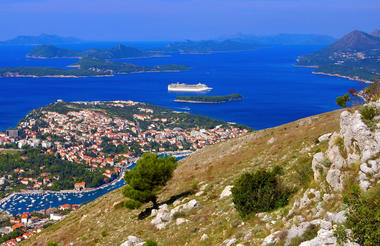
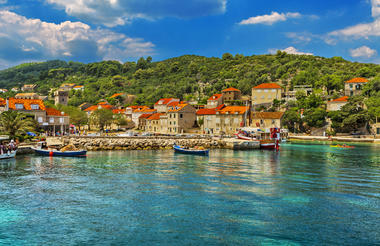
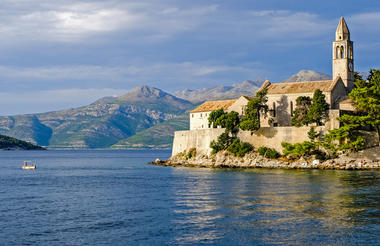
Dubrovnik is a well-preserved historical city in southern Croatia, known for its distinctive 16th century Old Town, encircled with massive stone walls. After a disastrous earthquake in 1667, the medieval town was rebuilt by Baroque planners and the city’s historic core seems to have been suspended in time ever since. Set-piece churches and public buildings blend seamlessly with green-shuttered stone houses, forming a perfect ensemble relatively untouched by the twenty-first century. Its impressive buildings range from the Baroque St. Blaise Church to the Renaissance Sponza Palace and the Gothic Rector’s Palace, which is now a history museum. Add to this a few exquisitely manicured gardens and some panoramic views of the Adriatic, and it is not difficult to see why Dubrovnik has long been Croatia’s most popular tourist destination.






